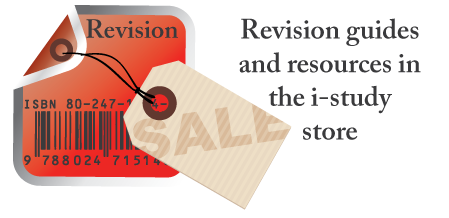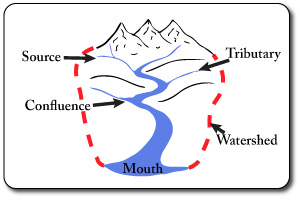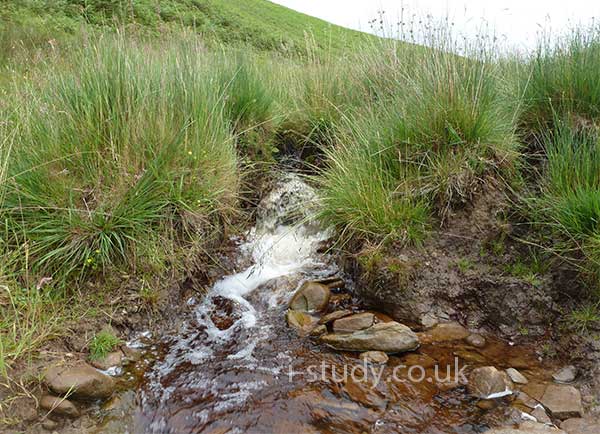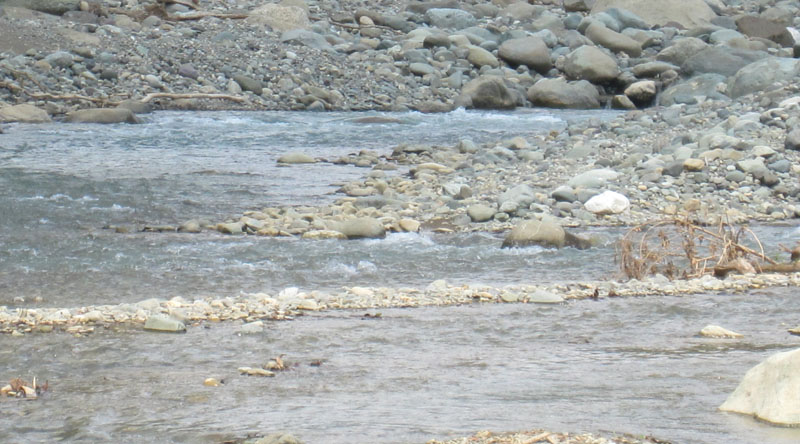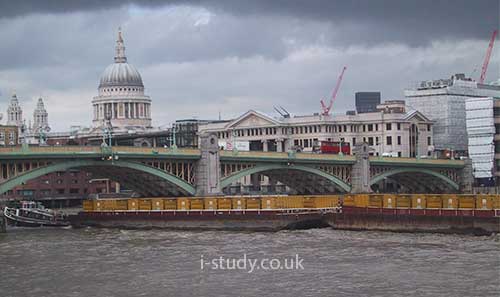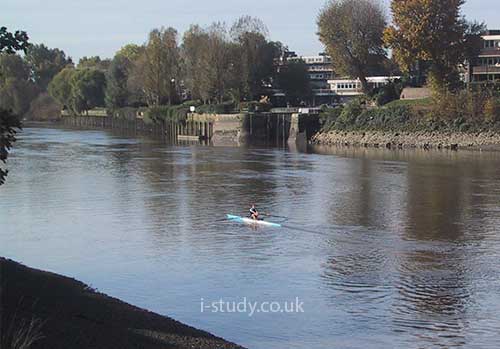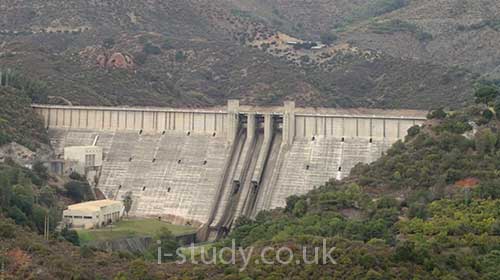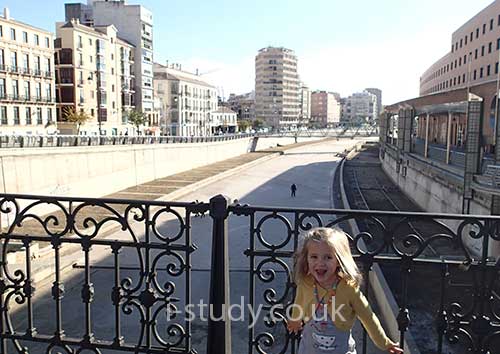Upper & Middle Course Landforms
Waterfalls
- Occur when rivers flow over layers of soft & hard rock.
- The soft rock is eroded more easily, this leads to the hard rock being undercut.
- A ledge of hard rock forms unitl it breaks and collapses into the plunge pool. Each time this happens the waterfall moves further upstream.
- As the waterfall retreats upstream it often creates a gorge, see Figure 2.28.
- Waterfalls occur in the upper and middle courses of rivers.
Tasks
- Draw your own digram of a waterfall and add labels that explain how waterfalls form and why they retreat back up the river.
- Describe the characteristics of the gorge shown in Figure 2.28
- Explain the features of the gorge shown in Figure 2.28
 Figure 2.26: Waterfall Formation
Figure 2.26: Waterfall Formation
 Figure 2.27: Waterfalls
Figure 2.27: Waterfalls
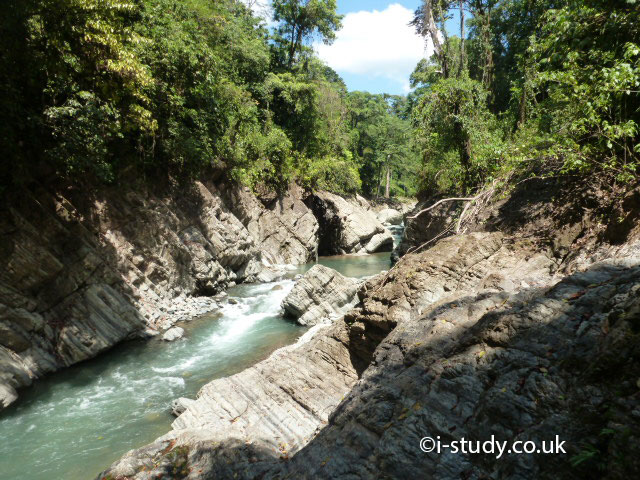 Figure 2.28: River Gorge
Figure 2.28: River Gorge
Floodplains and Meanders
These exist in the lower course of the river where deposition has occured. Repeated flooding deposits silt which builds up a flat fertile area -often used for agriculture.
Fast flowing water goes around the outside of river bends, eroding the river bank and widening the bend. The inside of bends have slow moving water which deposits material building up a slope/beach.
Conitnued erosion of meanders may result in the river short cutting through the bend to create a straight channel and leave an oxbow lake.
 Figure 2.29: Cross-section of a Meander
Figure 2.29: Cross-section of a Meander
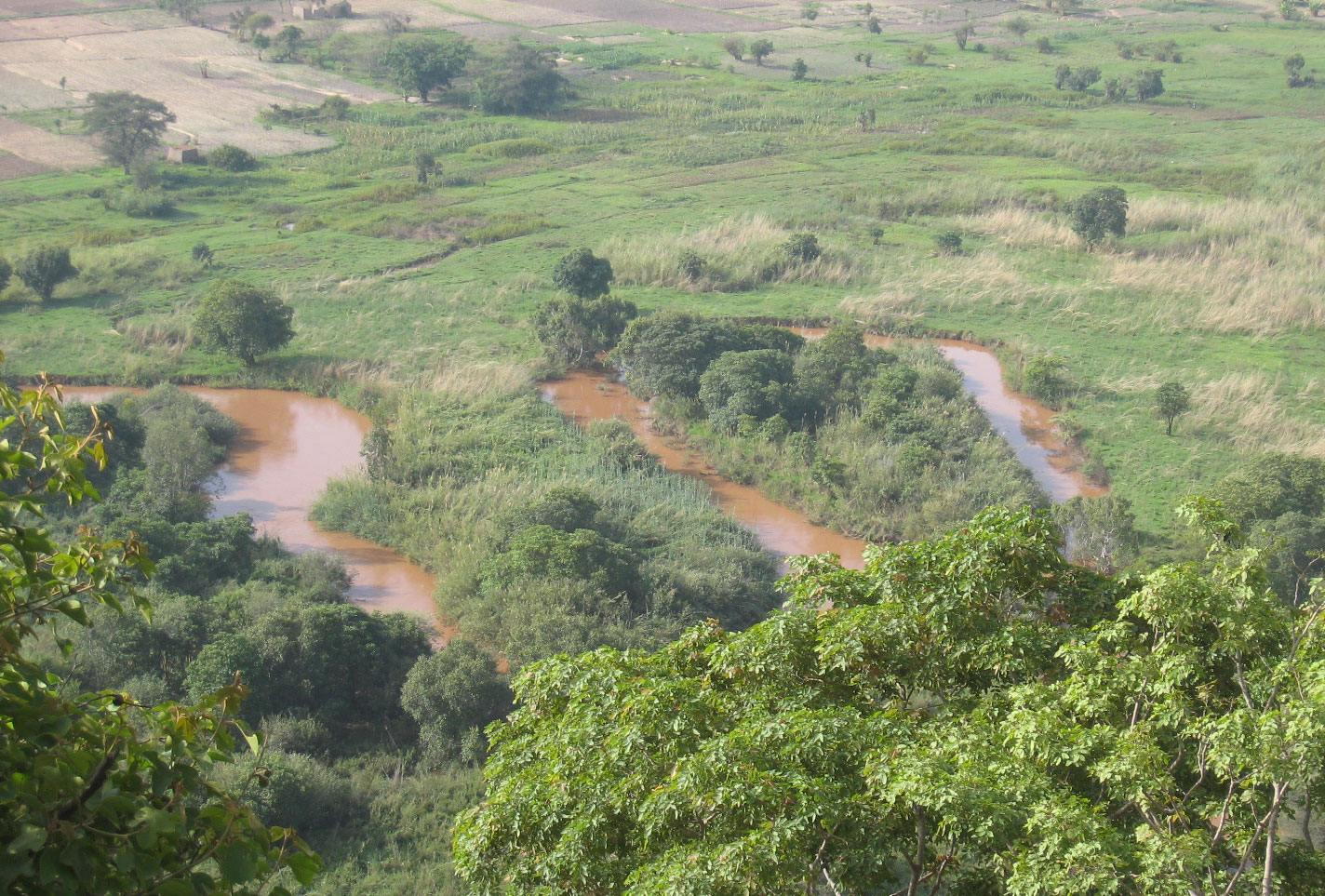 Figure 2.27: Meander through Floodplain
Figure 2.27: Meander through Floodplain
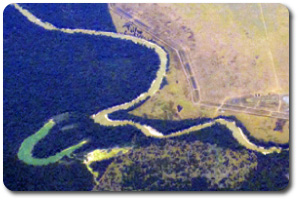 Figure 2.28: Oxbow Lake
Figure 2.28: Oxbow Lake
